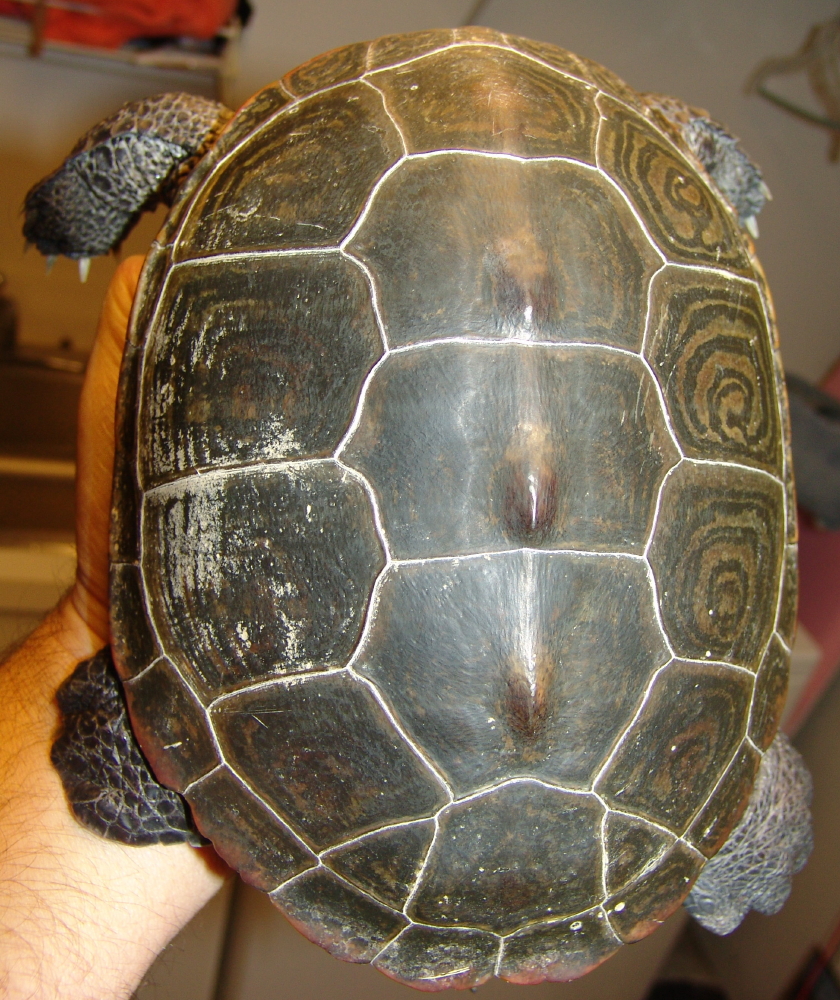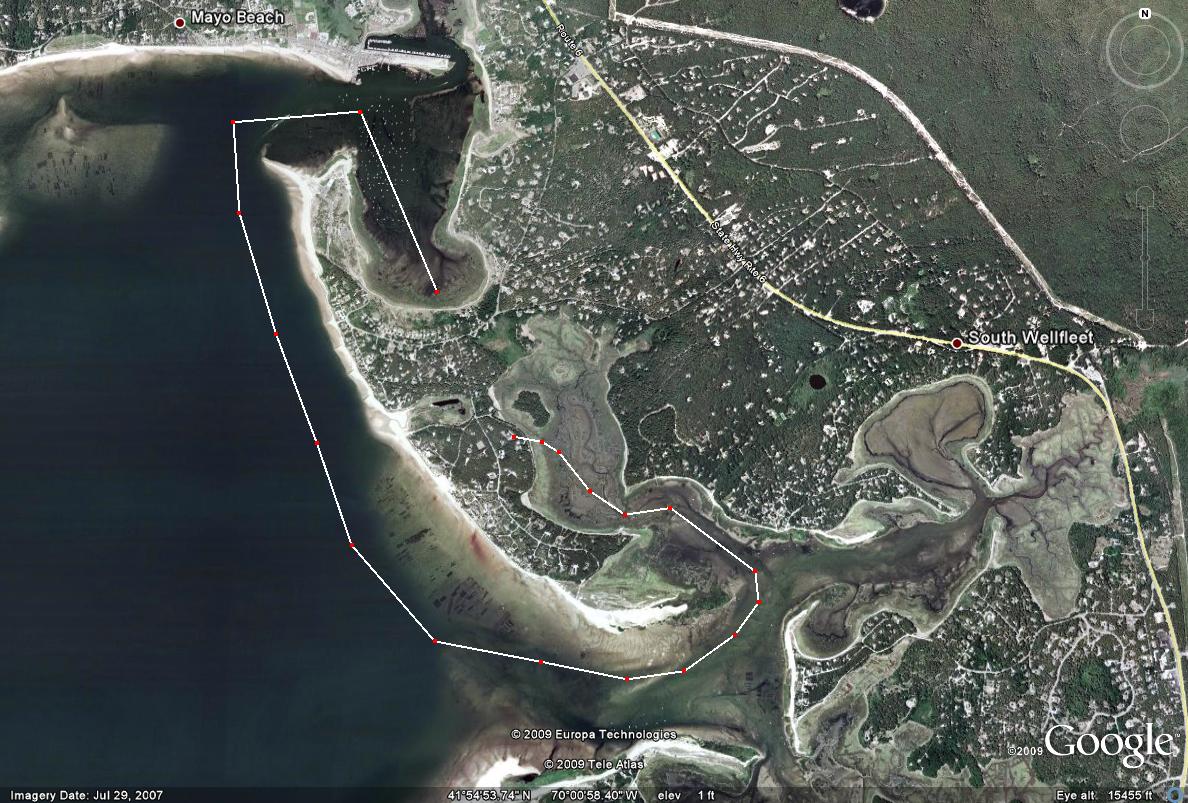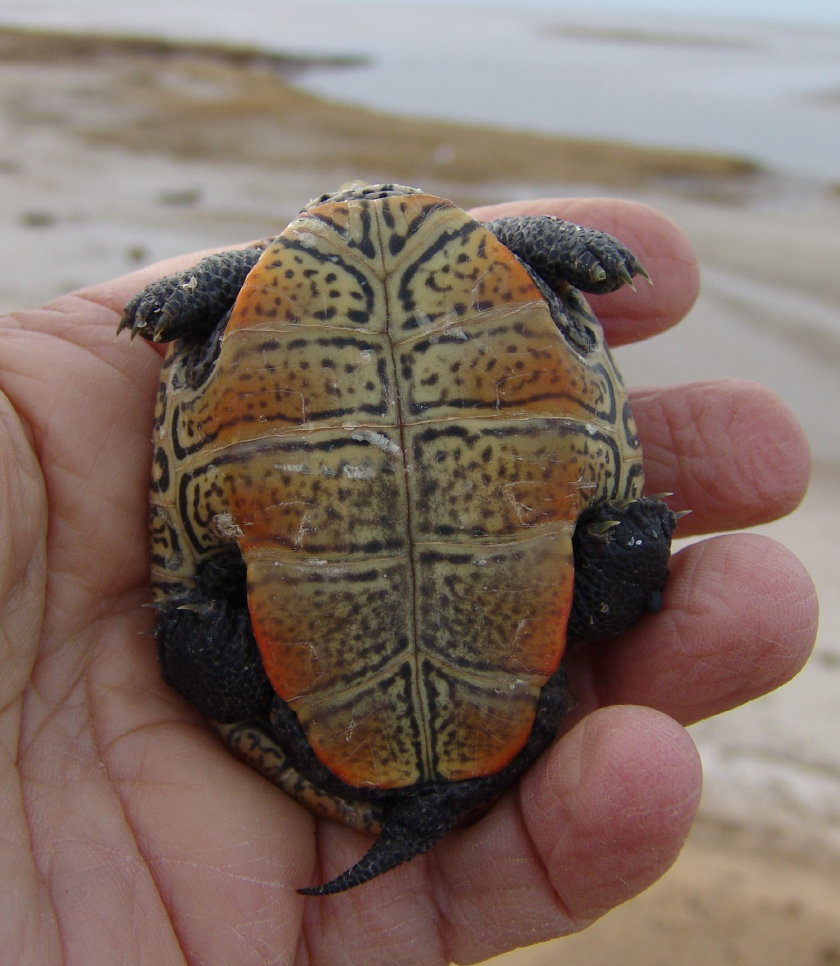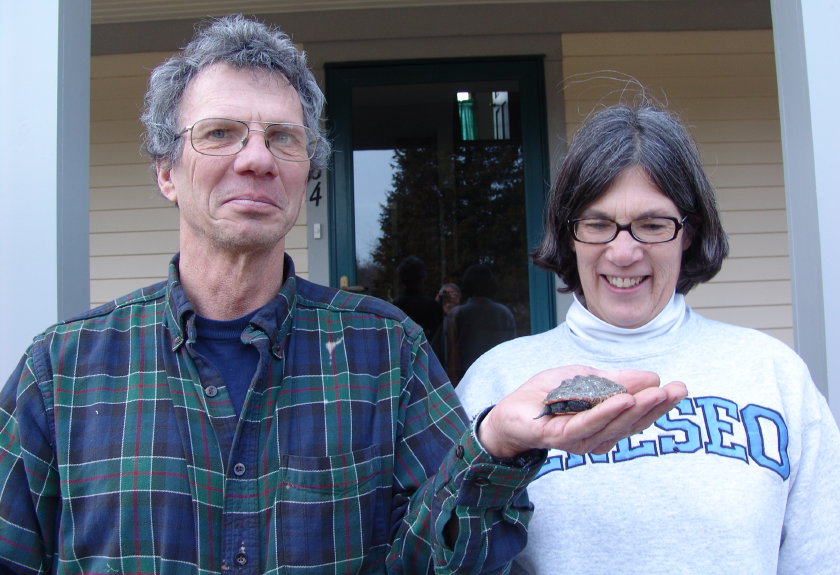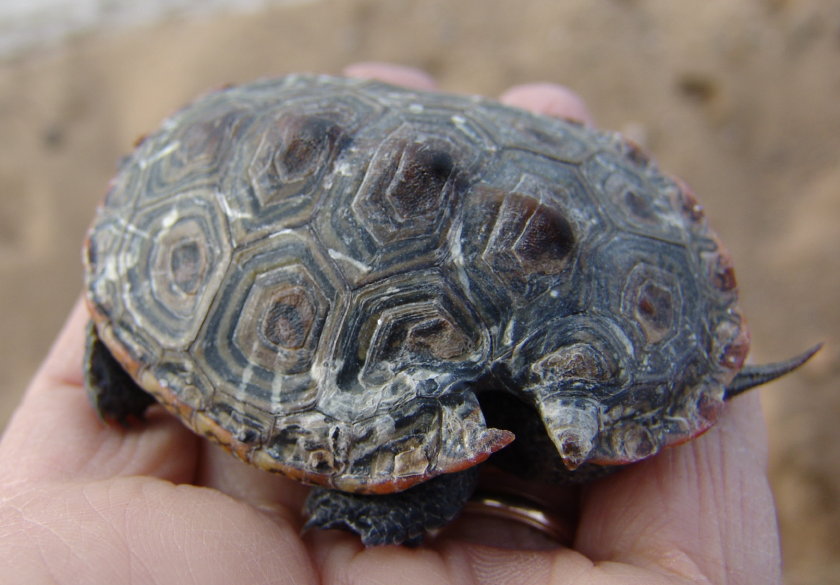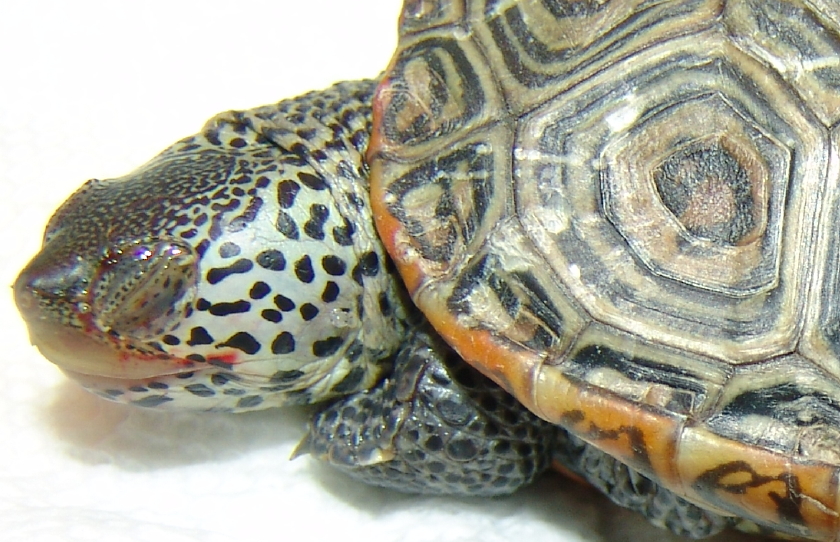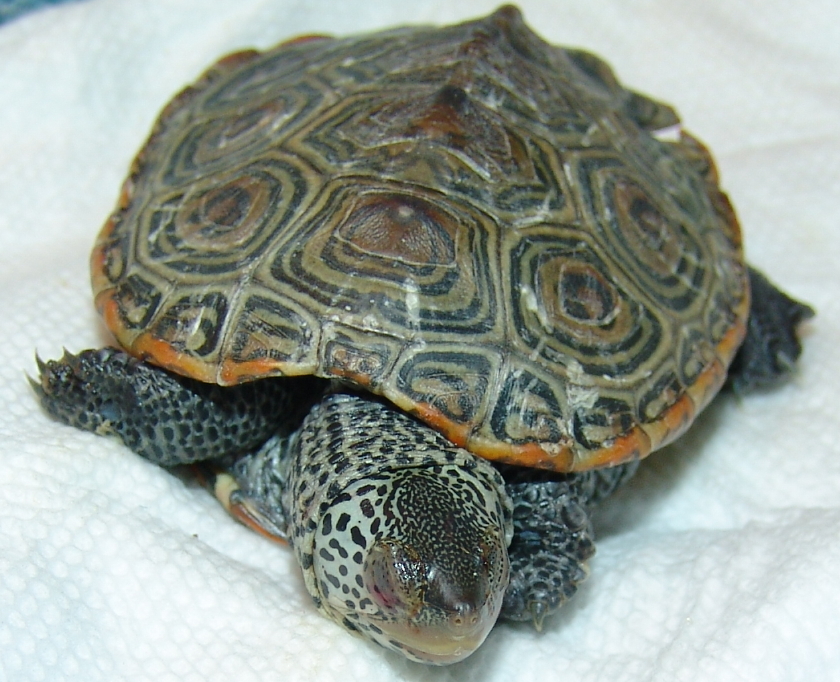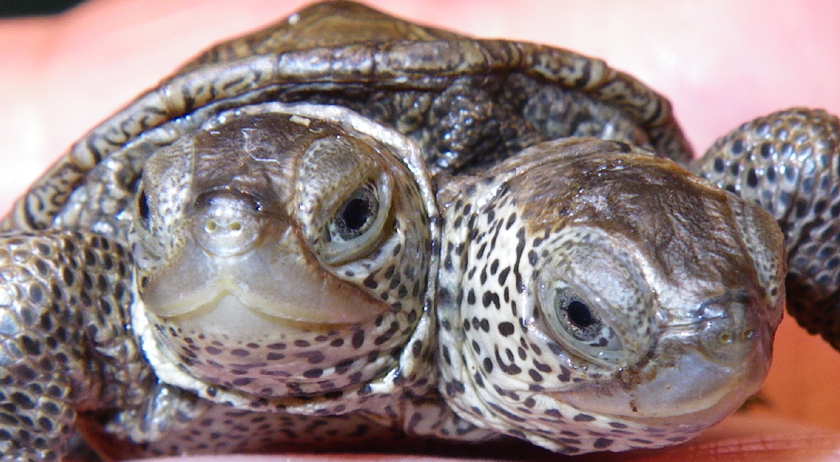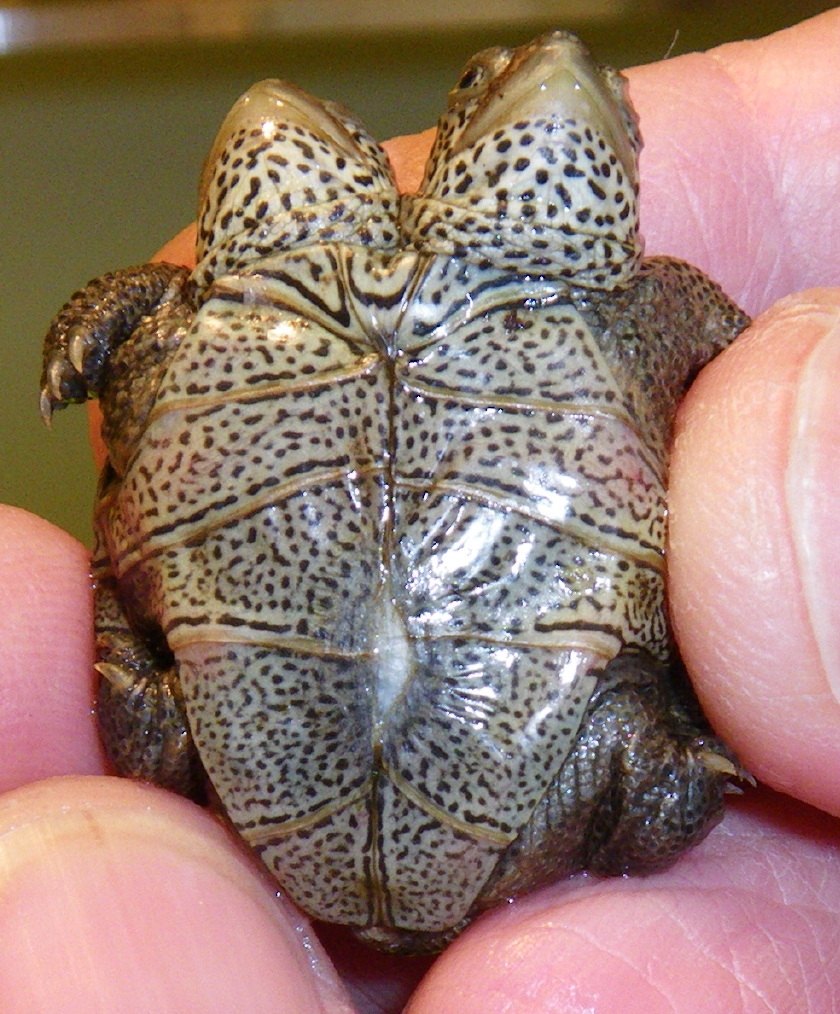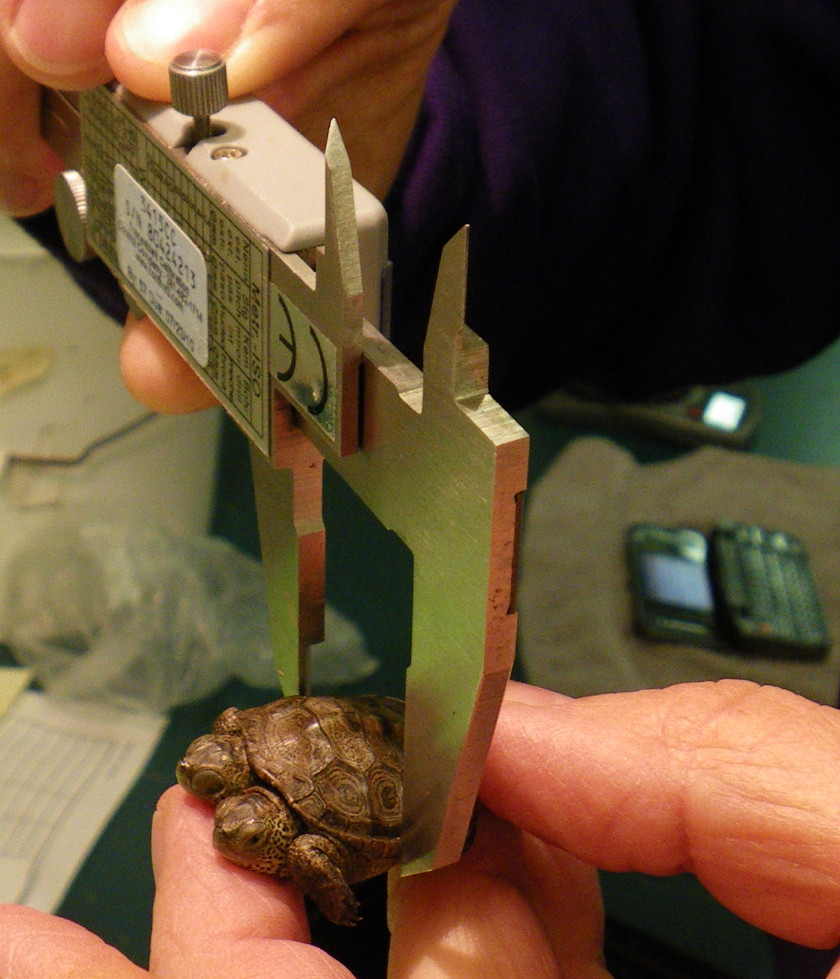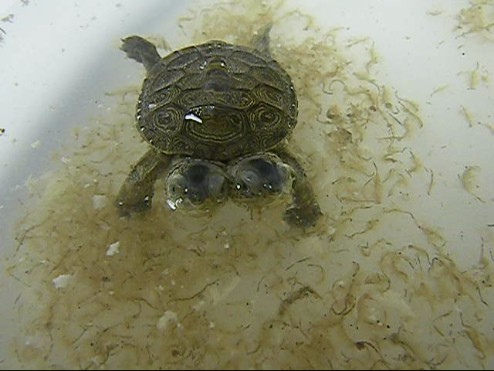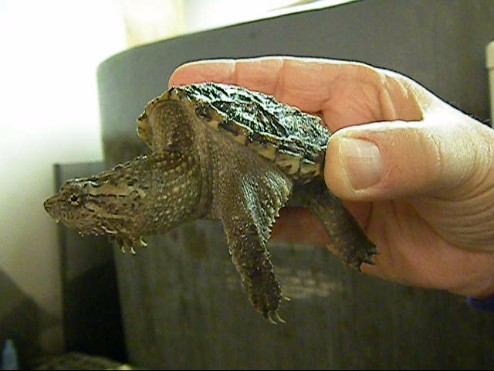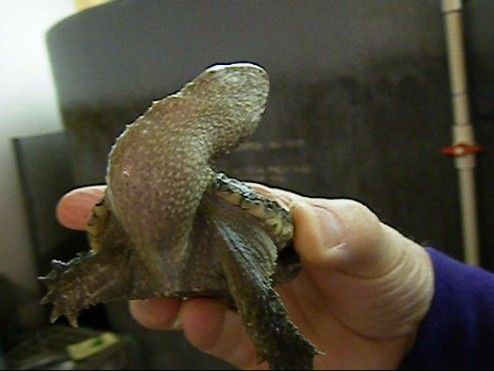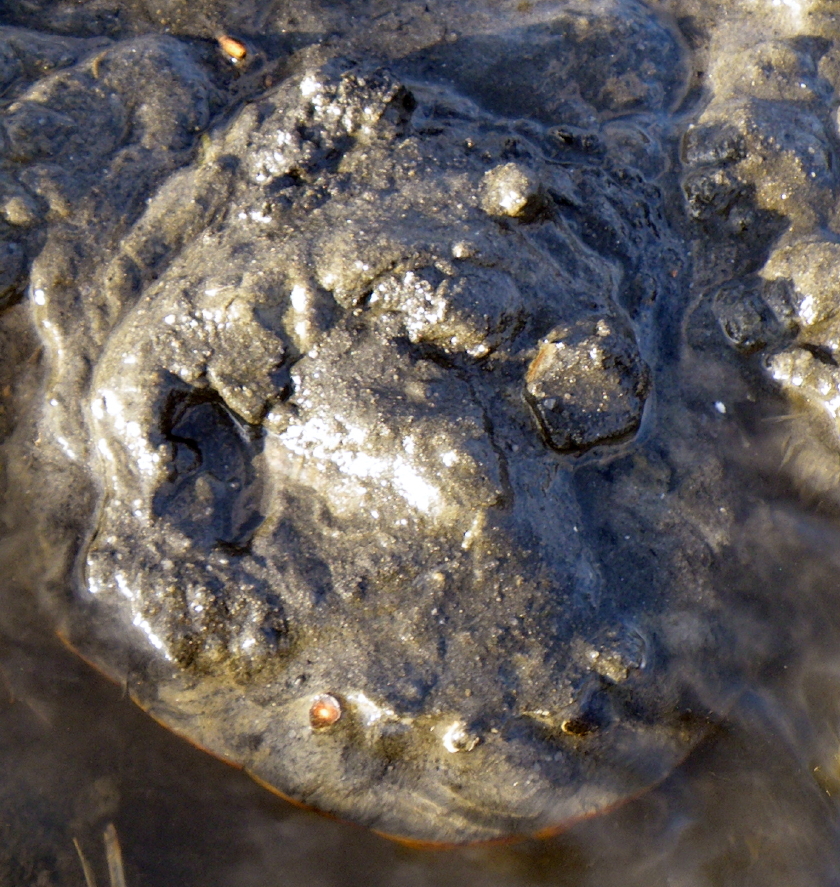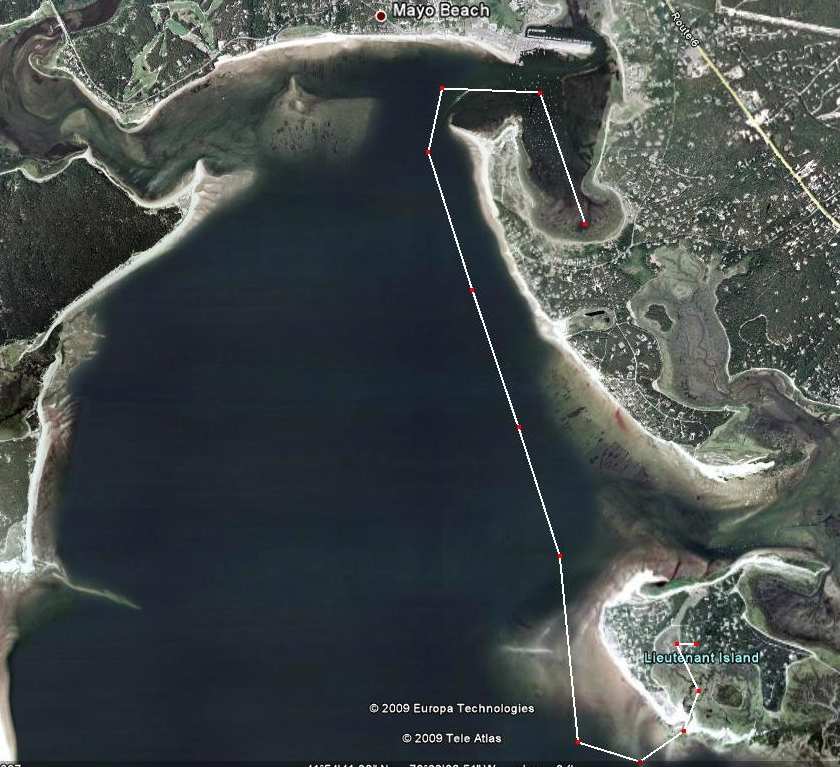Female Diamondback Terrapin #2074
Andy Koch, the Town of Wellfleet shellfish warden, rescued a severely cold-stunned diamondback terrapin from Chipman’s Cove during the low tide of Saint Patrick’s Day. This mature female turtle had been unearthed from her winter hibernaculum and had become exposed to frigid nighttime conditions on the Outer Cape. Andy called Mass Audubon‘s Wellfleet Bay Wildlife Sanctuary to report the find and graciously offered to transport the critically injured animal to the sanctuary for treatment and rehabilitation. You may recall that another frozen female terrapin had been rescued from Chipman’s Cove in late February (see Frozen Diamondback Terrapin Rescued from Near Certain Death in Wellfleet Harbor). This turtle, #2102, is fully recovered and waiting impatiently to be released once waters in Wellfleet reach 55 degrees F.
Burst Blood Vessels from Freezing
Even a cursory examination of her condition indicated that her greatest exposure to freezing conditions had involved her head and forelimbs.  Several times in the spring when Don has observed terrapins emerging from brumation (reptilian hibernation), he has spotted them still partially buried with head and forelimbs exposed, as though they had burrowed into the mud tail down and head up. In this turtle’s case, she exhibited fresh bleeding from both eyes and her mouth.
Eyes Still Show Effects of Burst Vessels
Later, after she was cleaned and gradually warmed, her eyes still showed the effects of burst blood vessels, presumably from the freezing cold. Also, she began to exhibit signs of earlier subcutaneous bleeding in her forelimbs, indicating that they too had been exposed to freezing conditions. We worry about the bleeding in the eyes because in several previous cases, it has been an indicator of some sort of brain damage that prevented the animal’s full recovery. In these cases, the turtles were unable to navigate when released into the wild. They would either move endlessly in circles or later be found back on shore motionless in the spot where they had been released.
Click Here to View Video in High Quality
Examination of Cold-Stunned Turtle After 72 Hours of Rehab
72-hours into her rehab, she is moving slowly, but independently, and she is tracking light and movement. Obviously, you can see from the video clip that this severely injured animal has a long way to go. But she’s a reptile and reptiles are extremely resilient critters.
Nesting Trek for Diamondback Terrapin #2074
We were able to identify this mature female as a previously captured and marked terrapin. Wheaton College interns had originally found, measured and marked #2074 on June 27th, 2005 on a nesting run at Anawan Road off the Fox Island Wildlife Management Area to the south. To reach this nesting location from her brumation site, #2074 would have had to make a one-way 4.5 mile trek. Since Wellfleet terrapins generally nest twice annually, separated by an average of 17 days between clutches, and since they generally return to the mating aggregation in Chipman’s Cove between nesting runs, #2074 would have made this 4.5 mile trek four times a year.
In 2005, #2074 measured 18.1 cm straight-line carapace length, weighed 1041 grams with eggs, and was assessed as 10 years old. On March 17th, 2009 she had grown to 19.0 cm carapace length and weighed 1231 grams without eggs. Obviously, she still sported the same split 5th vertebral with three scutes (see photograph at beginning of post), a nice anomaly that helps to confirm her identification.
